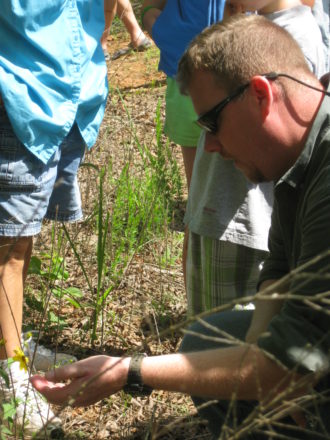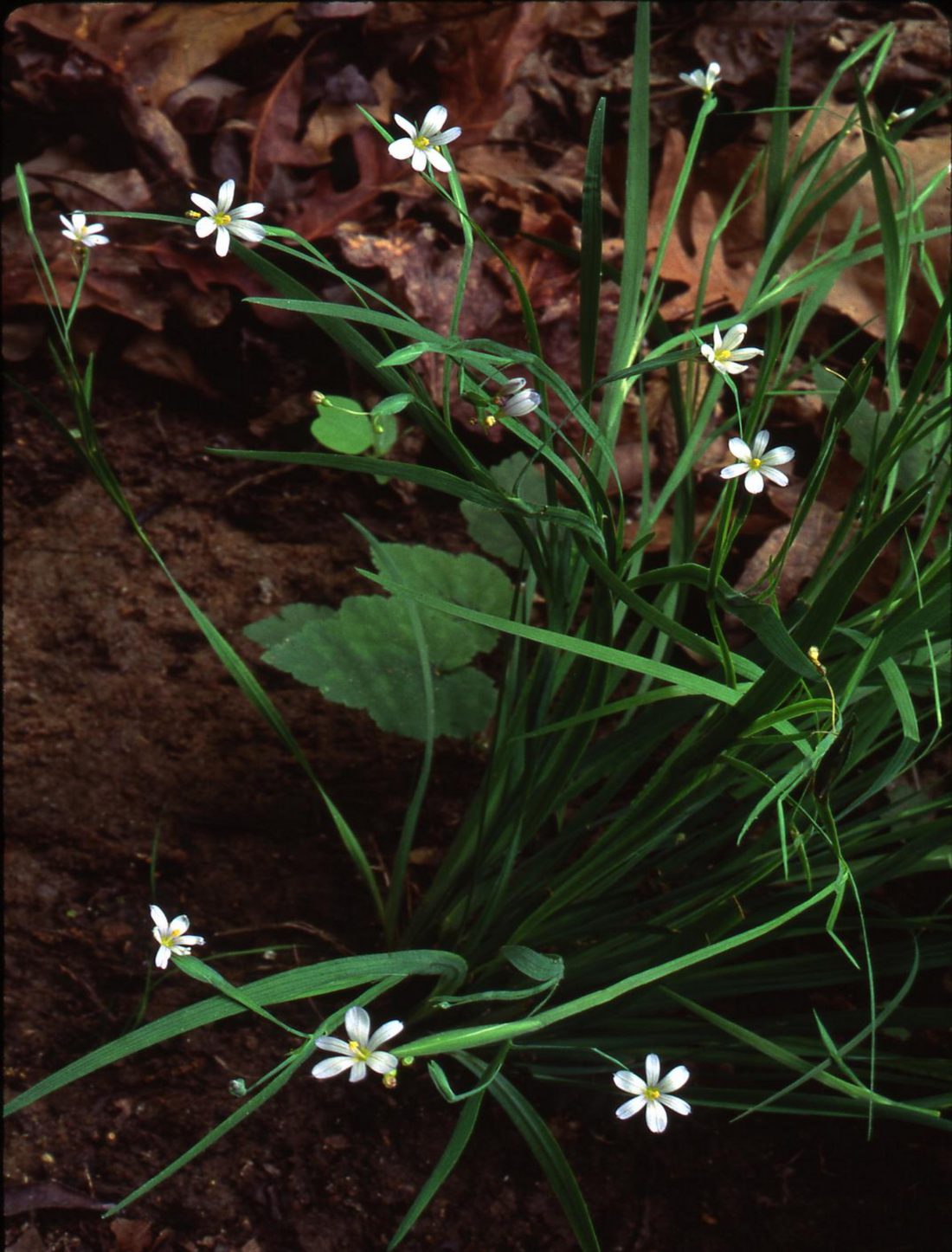Back in the early 20th century, the mountains and hollers of Polk County were infamous for hosting moonshiners and bootleggers, hidden away from the long arm of the government “revenooers.” But for the past seven years, botanist David Campbell has been hunting down a different kind of “most wanted” list: rare plants and animals, for which the area is one of the country’s richest environments.
“The vagaries of climate and geology and time and the dispersal mechanisms of plants and animals too — all of those things, just over vast eons of time, have given Polk County this sweet spot,” Campbell says.
With support from the conservation nonprofit Conserving Carolina and the Polk County Community Foundation, Campbell compiled an inventory of 32 significant natural heritage areas spread throughout the county, as well as 127 rare or watch-list plant species found at those sites (avl.mx/5ki). He will present those findings at the Anne Elizabeth Suratt Nature Center in Mill Spring on Saturday, Feb. 23, at 10:30 a.m.
Zone of plenty
There’s no single key to Polk County’s biodiversity, Campbell explains. Instead, a mix of many different elevations, ample rainfall, mild temperatures, and base-heavy (less acidic) soils makes the region receptive for species usually found in other parts of the country.
For example, Campbell says, the county contains the southernmost population of thicket creeper in the Eastern United States. The climbing vine is native to the Great Lakes region, hundreds of miles to the north, but the cooler climate and higher pH levels on top of Round Mountain in Saluda provide just the right habitat for seeds dropped by migrating birds.
“Maybe these birds are defecating all over Western North Carolina, but if these seeds are landing in the wrong soil, they won’t grow,” Campbell hypothesizes. “But in Polk County, maybe they can.”
Despite this diversity, at the time Campbell began his work in 2011, Polk was one of only five counties in the state that had not completed a thorough inventory of its biological treasures. The N.C. Natural Heritage Program’s main data on the county came from a 1994 study that also included parts of South Carolina, with other information derived from broad surveys of the Piedmont or Hickory Nut Gorge.
Pam Torlina, Conserving Carolina’s southeast stewardship manager, says the effort was long overdue as a resource for strategic planning of conservation work. “It’s hard to know what you should be protecting if you don’t know exactly what’s out there and where it is,” she points out.
Botanist’s posse

To help Polk County get up to speed, Torlina and Campbell knew they’d have to enlist the help of area residents. Together, they came up with the idea of “Polk County’s Most Wanted,” a monthly series of articles published in The Tryon Daily Bulletin and Polk County News Journal. Each edition highlights a specific plant or animal, gives details about its habitat and asks readers to submit tips on where it might be found.
The response, Torlina reports, was both swift and uniformly positive. “We all see the kudzu and hate it and realize it’s not supposed to be here,” she says. But the quest for the Most Wanted, she continues, gives readers a welcome opportunity “to look beyond that and appreciate some of the smaller things that maybe the common person might walk right past.”
Hundreds of residents called or emailed Torlina to share stories about rare species — and, crucially, to offer Conserving Carolina access to their land. Campbell says that many species surveys in North Carolina rely on public lands that are easily accessible, thereby missing the diversity on the private lands that make up the vast majority of the state’s total land area.
“If you look at the distribution maps of rare plants and animals in North Carolina, and you were to superimpose them over another map where all the universities are, you’ll notice a pattern: They’re all kind of correlated. It’s a sampling bias,” Campbell explains.
Rustling up diversity
By getting citizen scientists involved in the survey effort, Campbell could visit private property to locate hard-to-find species such as the small-mouth salamander, which breeds during the spring in temporary pools. Even when readers were wrong about what species they had on their property, he says, a trip was usually worthwhile: “There’s so much diversity that it’s almost like you’re going to get a win anywhere,” he says.
And people who connected with Conserving Carolina through the program, Torlina adds, are more likely to value Polk County’s flora and fauna moving forward. She says the nonprofit has seen increased turnout for its educational outreach programs, volunteer work days and hikes — where attendees keep their eyes wide open.
“I’ve had people mention to me that they save every article from the newspaper in a binder so they can go out and look for these plants when they’re in the field,” Torlina says. “I think it helps people become more aware of the really cool things that are growing right outside their door.”
Conserving Carolina will use Campbell’s report, Torlina says, to prioritize its land protection and acquisition projects, as well as to inform future grant applications. But she and Campbell both note that the work of mining Polk County’s incredible biodiversity isn’t over, and they plan to write more Most Wanted articles for the foreseeable future.
“No one should infer, even though it’s a great report, that we’ve got it all,” Campbell says. “You’ll never get it all. It’s just too big.”
WHAT: David Campbell presents “Biodiversity of Polk County, North Carolina”
WHERE: Anne Elizabeth Suratt Nature Center, 179 Wood Thrush Lane, Mill Spring, conservingcarolina.org
WHEN: Saturday, Feb. 23, 10:30 a.m. Free.




Before you comment
The comments section is here to provide a platform for civil dialogue on the issues we face together as a local community. Xpress is committed to offering this platform for all voices, but when the tone of the discussion gets nasty or strays off topic, we believe many people choose not to participate. Xpress editors are determined to moderate comments to ensure a constructive interchange is maintained. All comments judged not to be in keeping with the spirit of civil discourse will be removed and repeat violators will be banned. See here for our terms of service. Thank you for being part of this effort to promote respectful discussion.